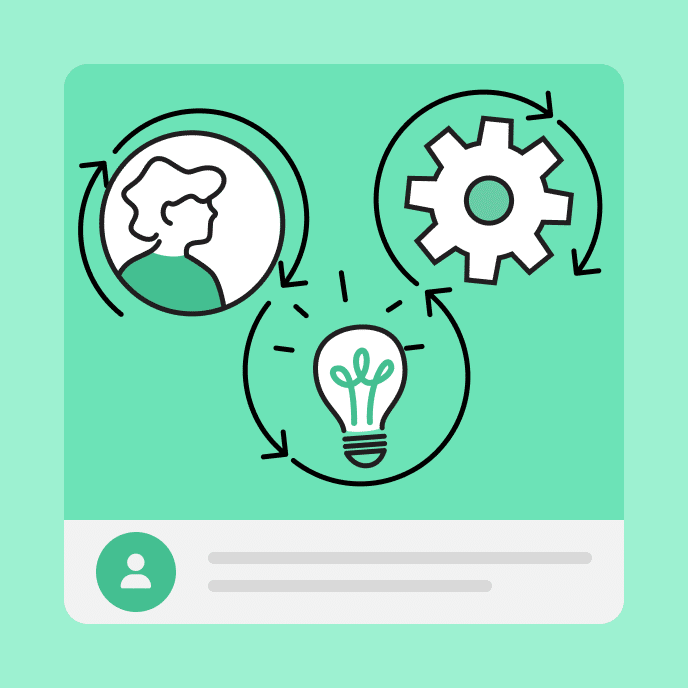What E-Learning Can Do for Sales Enablement (That You Might Not Expect)
Discover 6 creative sales training ideas you can build with e-learning—designed to boost rep performance, confidence, and real-world readiness.

The real sales enablement challenge
Sales is full of make-or-break moments. Reading a room. Handling curveballs. Knowing when to push and when to pause. Those skills separate good reps from great ones—but how does your sales team get them?
That’s the real sales enablement challenge: How do you help sales reps develop strong instincts—and sharpen them over time?
Surprisingly, e-learning can do just that. The right sales training program gives reps space to practice, learn from each other, and tap into support when they need it most. Here are six creative ways to make that happen.
Key Takeaways
- E-learning improves sales performance by transforming training into an on-demand resource that sales teams can use whenever they need support.
- Creative formats like simulations, gamified challenges, and personality-based scenarios make learning relevant, human, and applicable.
- Capturing peer insights, deal strategies, and competitive tips in reusable formats helps teams reinforce what works and apply it in real time.
6 sales training strategies to boost sales performance
1. Simulate sales calls without the pressure
Live interactions aren’t the best place to learn. Sales reps need low-stakes practice where they can make mistakes, try new techniques, and learn what works—without risking a deal.
This is where e-learning simulations shine. You can build interactive scenarios that guide reps through high-stakes conversations, such as running a discovery call, qualifying a lead, or responding to a pricing objection.
Each choice a rep makes affects the outcome. Did they ask a clarifying question or jump to a discount? Did they explain the value clearly or lean too hard on jargon? They’ll find out—and get the chance to try again.
Why it works:
- Sales teams practice conversations in a safe space.
- You can tailor scenarios to your industry, product, and customer types.
- It builds confidence and fluency—leading to stronger sales performance over time.
Bonus idea: Create a monthly “confidence challenge” with fresh scenarios and small team prizes.
2. Teach reps to read the room
Effective sales isn’t just about what you say—it’s who you’re saying it to. Reps often struggle when they use the same approach for every prospect, regardless of personality or priorities.
For example, a highly analytical CFO might want precise data, metrics, and ROI projections—while a visionary founder may prefer big-picture thinking, future-state outcomes, and bold ideas. Both perspectives are valid—but they require different messaging.
The solution? Improve performance by building a “read the room” sales training program. For example, you might introduce learners to various characters—all with distinct personality types. Reps can explore each personality, reflect on who they find easiest (or hardest) to connect with, and try a few short sales scenarios.
Why it works:
- It builds reps’ confidence when navigating different personalities.
- It makes soft skills like emotional intelligence, active listening, and adaptability trainable.
- It helps reps connect with customers more effectively—boosting relationships and sales performance.
Bonus idea: Add a short quiz to help sales reps identify their communication style. From there, offer tips on how to flex their approach to connect with each personality without losing authenticity.
3. Capture team wisdom in reusable lessons
Some of the most helpful sales coaching happens off the cuff—during team huddles, deal debriefs, or casual chats. But unless someone captures them, they disappear.
Don’t let that wisdom vanish. Instead, try creating a lightweight, always-growing lesson series built around rep stories and grouped by theme—like “budget battles.” These lessons could feature short videos in which a rep talks through a deal that went sideways (or spectacularly right), explains what they learned, and shares how they’d handle it now.
Consider turning each story into a self-contained lesson featuring:
- A short video where a rep shares their sales strategy.
- A quick summary, possibly autogenerated with an AI tool.
- A few knowledge check questions, which you could also autogenerate with AI.
Why it works:
- Sales team members learn from each other.
- Real stories feel more practical than theoretical scenarios.
- It creates a culture of sharing.
Bonus idea: Start a “story share”—like a book club, but for peer-led learning. Everyone watches the same story before a team meeting and discusses what they learned.
4. Make competitive prep fast, engaging, and repeatable
Battlecards are quick guides that help sales reps explain how your product stacks up. These are helpful in theory but often ignored in practice. Why? Reps often complain that they’re too rudimentary, generic, or out-of-date.
So what if you turned them into something engaging, dynamic, and easy to update? Try creating interactive battlecard lessons that include:
- A short overview of key differentiators.
- Common objections reps are likely to get—and clever ways to respond.
- Deal examples that learners can explore.
- Audio clips from top reps sharing how they’ve won competitive deals.
- A short quiz to reinforce the takeaways and boost retention.
Why it works:
- Reps interact with the material instead of skimming it.
- It’s easy to reference before or after a sales conversation.
- You can reuse the format whenever a new competitor pops up.
Bonus idea: Add a summary lightning round at the beginning or end of each lesson for quick reference to increase sales productivity.
5. Gamify your sales process with a strategic deal escape room
Sales success requires navigating the entire arc of a deal. Reps need to make the right moves in the right order, adjust on the fly, and keep momentum going.
One creative way to help team members practice those skills is a “deal escape room.” This challenge lets reps test their instincts across the entire sales journey, unlocking each stage by making smart, timely decisions.
From researching the account to handling blockers and writing the perfect follow-up, reps move through a realistic progression—building strategic thinking along the way.
Here’s how it could work:
- Start with a scenario: a new lead comes in, and reps choose how to prepare.
- Move to first contact. Do reps personalize their pitch?
- Throw in a twist. For example, a new stakeholder enters, or a competitor swoops in.
- End with a “did you close?” moment—based on how learners played the game.
- Include scoring and a results screen highlighting what your learners nailed—and what warrants revisiting.
Why it works:
- Reps practice decision-making across the entire sales cycle.
- It blends tactical skills with strategic thinking to elevate sales performance.
- It adds energy and competition—without feeling cheesy or high-pressure.
Bonus idea: Add a “second chance” path. Let reps who don’t win the deal unlock alternate scenarios where they can go back, revise their approach, and try again.
6. Launch a deal prep station to streamline sales operations
You’ve built the content—now make it usable. A “deal prep station” is your central hub where sales team members can find what they need, exactly when they need it, organized around real sales moments.
Think of it like a lightweight learning library—something like Reach—that makes enablement content easy to find and fast to use. Whether reps are heading into a discovery call, prepping for objections, or navigating a competitive close, they can dip in, grab what’s useful, and go in with confidence.
Why it works:
- Bring all your best resources together, so reps always know where to search.
- It helps reps increase sales productivity and feel more confident heading into key sales moments—supporting stronger performance when it counts.
- It’s easy to update, so your training stays useful as things change.
Bonus idea: Update this regularly. Over time, it can become your team’s go-to spot to recharge and grow their skills.
From checklist to strategic enablement
With flexible tools and a bit of creative thinking, you can build a successful sales enablement strategy that equips teams with the resources and skills they need to thrive.
These ideas aren’t about reinventing your strategy. They’re about making smart support easier to access, remember, and use in the moments that matter.
Whether you’re building a sales simulation, story vault, or choose-your-own competitor challenge, you’re not just delivering training. You’re building confidence, fluency, and momentum—on demand.
Want more ideas for energizing your sales performance? Check out these interactive e-learning strategies for ways to keep your content engaging, flexible, and learner-first.
You may also like

How to Make Compliance Training Fun: Engage Learners for Good
Learn practical, actionable tips to transform compliance training from boring to fun using storytelling, gamification, microlearning, and more engaging strategies.

